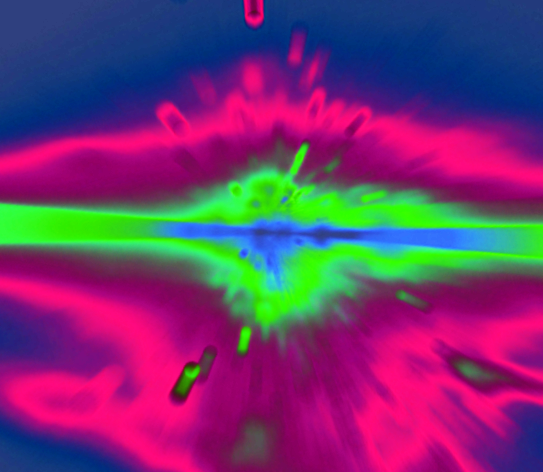Fusion powers through threshold
 US scientists are hailing a major breakthrough in nuclear fusion.
US scientists are hailing a major breakthrough in nuclear fusion.
Researchers at the US National Ignition Facility (NIF) in California say they have completed fusion experiments that released more energy than was pumped in - a landmark achievement known as ignition or energy gain.
Fusion energy is a potential game-changer for humanity - theoretically able to provide plentiful power while releasing no greenhouse gases nor radioactive waste by-products.
A single kilogram of fusion fuel - usually made of heavy forms of hydrogen called deuterium and tritium - can provide as much energy as 10 million kilograms of fossil fuel.
However, fusion energy machines currently require vast amounts of power, and until now, had never produced more power than it took to get them going.
But this week, researchers announced the achievement of fusion ignition at Lawrence Livermore National Laboratory (LLNL).
LLNL’s experiment surpassed the fusion threshold by delivering 2.05 megajoules (MJ) of energy to the target, resulting in 3.15 MJ of fusion energy output, demonstrating for the first time a most fundamental science basis for inertial fusion energy (IFE).
Fusion is the process by which two light nuclei combine to form a single heavier nucleus, releasing a large amount of energy.
In the 1960s, a group of scientists at LLNL hypothesised that lasers could be used to induce fusion in a laboratory setting.
Led by physicist John Nuckolls, who later served as LLNL director from 1988 to 1994, this revolutionary idea became inertial confinement fusion, kicking off more than 60 years of research and development in lasers, optics, diagnostics, target fabrication, computer modelling and simulation and experimental design.
To pursue this concept, LLNL built a series of increasingly powerful laser systems, leading to the creation of NIF, the world’s largest and most energetic laser system. NIF - located at LLNL in Livermore, California - is the size of a sports stadium and uses powerful laser beams to create temperatures and pressures like those in the cores of stars and giant planets, and inside exploding nuclear weapons.
“We have had a theoretical understanding of fusion for over a century, but the journey from knowing to doing can be long and arduous. Today’s milestone shows what we can do with perseverance,” says Dr Arati Prabhakar, the US President’s chief adviser for Science and Technology.
“The pursuit of fusion ignition in the laboratory is one of the most significant scientific challenges ever tackled by humanity, and achieving it is a triumph of science, engineering, and most of all, people,” LLNL Director Dr. Kim Budil said.
“Crossing this threshold is the vision that has driven 60 years of dedicated pursuit - a continual process of learning, building, expanding knowledge and capability, and then finding ways to overcome the new challenges that emerged. These are the problems that the U.S. national laboratories were created to solve.”
More details are accessible here.
While the Americans are celebrating their success, Australian expert Dr Mark Diesendorf notes their claim that nuclear fusion is “safe and clean” is incorrect.
“Laser fusion, particularly as a component of a fission-fusion hybrid reactor, can produce neutrons that can be used to produce the nuclear explosives Plutonium-239, Uranium-235 and Uranium-233,” he said.
“It could also produce tritium, a form of heavy hydrogen, which is used to boost the explosive power of a fission explosion, making fission bombs smaller and hence more suitable for use in missile warheads.
“The US National Ignition Facility, which did the research, is part of the Lawrence Livermore National Laboratory, which plays a major role in US defence and weapons research.”
He says that to go from break-even, where energy output is greater than total energy input, to a commercial nuclear fusion reactor could take at least 25 years, and; “By then the whole world could be powered by safe and clean renewable energy, primarily solar and wind”.







 Print
Print